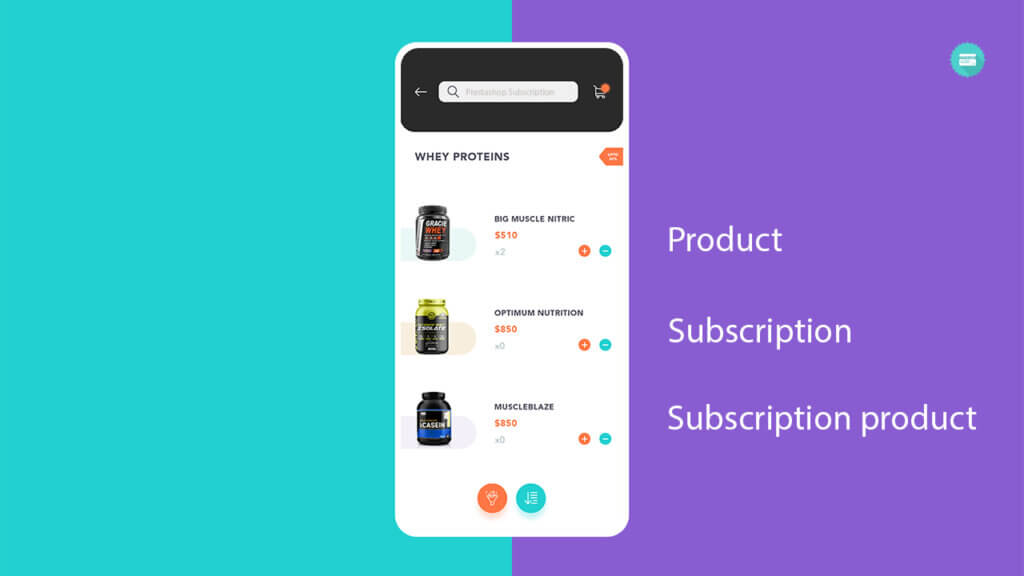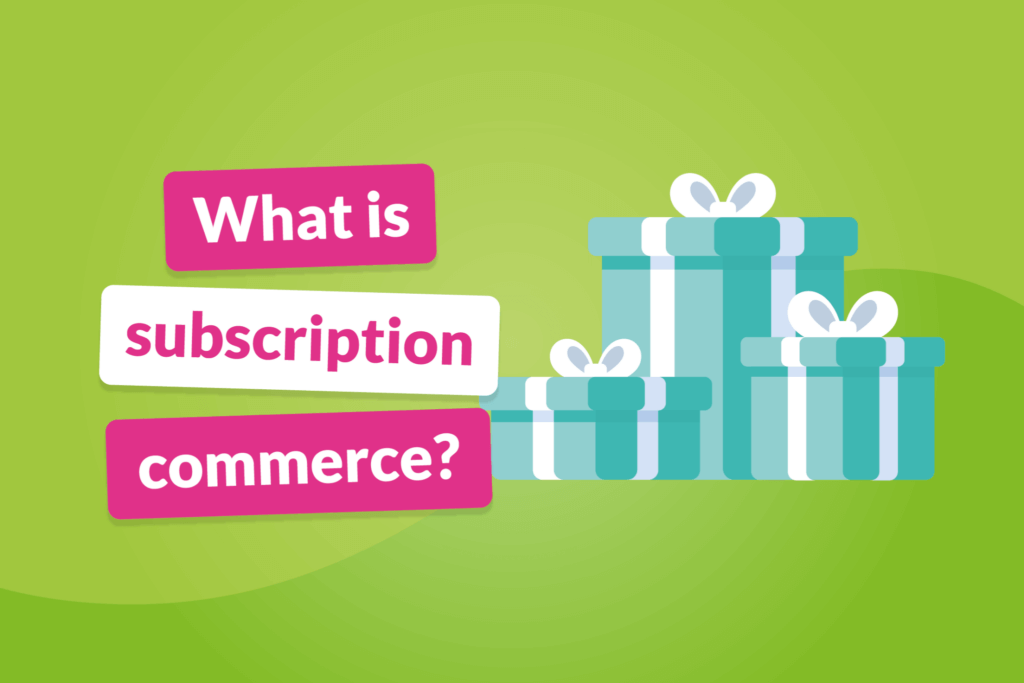Subscription Commerce
Introduction:
Subscription commerce, or subscription-based e-commerce, is a business model where customers pay a recurring fee to receive a product or service regularly. This model has become increasingly popular as consumers seek more convenient, personalized shopping. This article will explore the world of subscription commerce, its benefits and challenges, and strategies for success.
What is Subscription Commerce?
Subscription commerce is a business model where customers pay a recurring fee, usually every month, to receive a product or service regularly. This model is used by many businesses, from meal kit delivery services like Blue Apron to beauty subscription boxes like Birchbox.
Why is Subscription Commerce Popular?
Subscription-based commerce has become increasingly popular in recent years due to a variety of factors, including:
- Convenience: Subscription commerce allows customers to receive regular product or service deliveries without constantly reordering or visiting a physical store.
- Personalization: Subscription e-commerce companies often use data-driven personalization to tailor products and services to each customer’s preferences.
- Cost Savings: Subscription commerce can offer cost savings to customers who purchase products or services regularly, as many companies offer discounts for subscribers.
- Discovery: Subscription commerce can allow customers to discover new products or services they may not have otherwise tried.
- Loyalty: Subscription commerce companies often prioritize building solid relationships with their customers, which can lead to increased loyalty and retention.
History of Subscription Commerce
While subscription commerce has become increasingly popular, the model has existed for decades. Magazine subscriptions, for example, have been a staple of the subscription commerce industry for over a century. However, with e-commerce subscription services and new technologies, subscription commerce has evolved into new sectors.
Types of Subscription Commerce:
Subscription commerce has become a popular business model that subscription e-commerce companies in various industries use to offer customers a convenient and personalized shopping experience. There are three main types of subscription commerce: box subscriptions, product subscriptions, and service subscriptions. This article will explore each type of subscription commerce, how they work, and some examples of companies that use these models.
Box Subscriptions:
Box subscriptions are subscription commerce where customers receive a box of products regularly. These boxes often contain a curated selection of products tailored to the customer’s preferences. Some famous examples of box subscriptions include:
- Birchbox: Birchbox is a beauty subscription service that sends customers a monthly box of personalized beauty products. Customers fill out a beauty profile to help Birchbox curate products tailored to their preferences.
- FabFitFun: FabFitFun is a lifestyle subscription service that delivers a box of beauty, wellness, and fashion products on a seasonal basis. Each pack contains full-sized products selected based on the customer’s preferences.
Product Subscriptions:
Product subscriptions are a type of subscription commerce where customers receive a specific product regularly. These products, such as food, beverages, or personal care products, are often consumable. Some examples of product subscriptions include:
- Dollar Shave Club: Dollar Shave Club is a subscription service that regularly delivers razors and other grooming products to customers. Customers can customize their subscriptions to receive new products monthly or bi-monthly.
- The Honest Company: The Honest Company is a subscription service that regularly delivers natural and eco-friendly baby and personal care products to customers Customers can customize their subscriptions to receive specific products and quantities.
Service Subscriptions:
Service subscriptions are a type of subscription commerce where customers receive ongoing access to a service. These services often involve regular use, such as streaming video or meal kit delivery. Some famous examples of service subscriptions include:
- Netflix: Netflix is a subscription-based streaming video service that allows customers to access a vast library of TV shows and movies every month.
- Blue Apron: Blue Apron is a meal kit delivery service that delivers pre-portioned ingredients and recipes to customers weekly. Customers can customize their subscriptions to receive meals for a specific number of people and dietary preferences.
Subscription commerce has become a popular business model that offers customers a convenient and personalized shopping experience. Box subscriptions, product subscriptions, and service subscriptions are three main types of subscription commerce that allow companies to provide regular deliveries of products or ongoing access to services. Whether it’s beauty products, razors, or streaming video, subscription commerce has transformed how consumers shop and interact with brands.
Benefits of Subscription Commerce:
Subscription commerce is a business model where customers pay a recurring fee to receive a product or service regularly. This model has become increasingly popular as consumers seek more convenient, personalized shopping. This article will explore the benefits of subscription commerce for both businesses and consumers.
Convenience:
One of the primary benefits of subscription commerce is convenience. Customers can receive regular product or service deliveries without constantly reordering or visiting a physical store. This makes it easier for customers to stay stocked on their favorite products or access the needed services without going out of their way.
Personalization:
Subscription commerce companies often use data-driven personalization to tailor products and services to each customer’s preferences. Customers can receive customized products or services for their needs and interests, creating a more personalized shopping experience.
Cost Savings:
Subscription commerce can offer cost savings to customers who purchase products or services regularly. Many companies offer discounts for subscribers, making it more affordable for customers to access the products and services they need.
Discover:
Subscription commerce can allow customers to discover new products or services they may not have otherwise tried. Many subscription services provide customers with a curated selection of products or services, allowing them to try new things and expand their horizons.
Loyalty:
Subscription commerce companies often prioritize building solid relationships with their customers. By providing a convenient and personalized shopping experience, subscription commerce can help companies build customer loyalty and retention. This can lead to increased revenue and long-term success for businesses.
Subscription commerce offers a range of benefits to both businesses and consumers. From convenience and personalization to cost savings and discovery, subscription commerce has transformed how consumers shop and interact with brands. As the subscription commerce model continues to evolve and expand into new industries, it’s clear that this business model is here to stay.
Challenges of Subscription Commerce:
In recent years, subscription commerce has become an increasingly popular business model, offering customers a convenient and personalized shopping experience. However, this model is not without its challenges. This article will explore some critical challenges of subscription commerce and how companies can overcome them.
Customer Churn:
Customer churn, or the rate subscribers cancel their subscriptions, is a significant challenge for subscription commerce companies. High churn rates can be caused by various factors, including dissatisfaction with the product or service, changes in financial circumstances, or simply a lack of interest.
To combat customer churn, subscription commerce companies must focus on delivering high-quality products or services that meet the needs and preferences of their customers. They can also offer incentives, such as discounts or exclusive content, to encourage customers to remain subscribed.
Competition:
As subscription commerce has grown in popularity, so too has the level of competition in the market. Subscription commerce companies must differentiate themselves from competitors by offering unique products or services, providing exceptional customer service, and building strong brand loyalty.
Pricing Strategy:
Determining the right pricing strategy can be a challenge for subscription commerce companies. Customers expect to receive a discount for subscribing to a product or service. Still, companies must also ensure that their subscription fees are high enough to cover their costs and generate a profit.
To address this challenge, subscription commerce companies can conduct market research to determine the optimal pricing strategy for their product or service. They can also offer different subscription tiers with varying features or benefits to appeal to a broader range of customers.
Logistics and Fulfillment:
Subscription commerce companies must also manage the logistics and fulfillment of their products or services. This can be particularly challenging for companies that offer physical products, as they must ensure that products are manufactured, packaged, and shipped to customers regularly.
To overcome this challenge, subscription commerce companies can partner with fulfillment and logistics companies to handle the operational aspects of their business. They can also invest in technology and automation to streamline the fulfillment process and ensure that products are delivered to customers promptly and efficiently.
Subscription commerce offers a range of benefits to businesses and customers, but it also presents several challenges that must be addressed to succeed. By focusing on customer satisfaction, differentiation, pricing strategy, and logistics and fulfillment, subscription commerce companies can overcome these challenges and build a successful business model.
Strategies for Success in Subscription Commerce
Subscription commerce has become a popular business model for companies looking to provide customers with a convenient and personalized shopping experience. However, the success of a subscription commerce business is not guaranteed. This article will explore some strategies for success in subscription commerce.
Focus on Customer Retention
Customer retention is critical to the success of a subscription commerce business. Companies should focus on providing high-quality products or services that meet the needs and preferences of their customers. By delivering a superior customer experience, companies can build loyalty and retain subscribers over the long term.
Continuously Improve Products and Services
Subscription commerce companies must continuously improve their products or services to keep up with changing customer preferences and market trends. Companies can gather feedback from subscribers through surveys or customer support channels and use this information to make informed decisions about product or service improvements.
Offer Personalization
Personalization is a crucial differentiator for subscription commerce companies. By using data-driven insights, companies can tailor their products or services to the individual preferences of each subscriber. This creates a more engaging and personalized shopping experience that encourages customers to remain subscribed.
Optimize Pricing Strategy
Pricing strategy is critical to the success of a subscription commerce business. Companies must balance offering affordable subscription fees that attract new customers and generate enough revenue to cover costs and profit. A/B testing and market research can help companies determine the optimal pricing strategy for their product or service.
Leverage Data and Analytics
Data and analytics are essential tools for subscription commerce companies. Companies can gain insights into customer preferences, behavior, and satisfaction levels by analyzing subscriber data. This information can inform product development, marketing strategies, and customer retention efforts.
Partner with Complementary Businesses
Partnering with complementary businesses can help subscription commerce companies expand their offerings and reach new customers. For example, a subscription commerce company that sells healthy snacks could partner with a fitness brand to offer subscribers a discount on gym memberships.
Provide Exceptional Customer Service
Exceptional customer service is a crucial driver of customer loyalty and retention in subscription commerce. Companies should invest in robust customer support channels and respond quickly to subscriber inquiries and concerns. By providing a positive customer experience, companies can increase customer satisfaction and reduce churn rates.
Subscription commerce offers a range of benefits to companies and customers alike, but success is not guaranteed. By focusing on customer retention, continuous improvement, personalization, pricing strategy, data and analytics, partnerships, and exceptional customer service, subscription commerce companies can build a successful business and provide customers with a convenient and personalized shopping experience.
Examples of Successful Subscription Commerce Companies
Subscription commerce has become a popular business model for companies across various industries. While not every subscription commerce business is booming, many examples of companies have used this model to drive growth and build a loyal customer base. This article will explore some examples of successful subscription commerce companies.
Dollar Shave Club
Dollar Shave Club is a subscription commerce company that delivers razors and other grooming products directly to customers’ doors. The company was founded in 2011 and quickly gained a following for its affordable prices and high-quality products. Unilever acquired Dollar Shave Club in 2016 for a reported $1 billion.
Birchbox
Birchbox is a subscription commerce company that delivers personalized beauty products to customers each month. The company was founded in 2010 and has since expanded to offer a range of beauty and grooming products for both men and women. Birchbox has raised over $80 million in funding and has over one million subscribers.
Blue Apron
Blue Apron is a subscription commerce company that delivers meal kits to customers’ doors. The company was founded in 2012 and has since expanded to offer a range of recipes and dietary options. Blue Apron went public in 2017 and was valued at over $2 billion at its IPO.
Spotify
Spotify is a subscription commerce company that provides users access to a vast library of music and podcasts. The company was founded in 2006 and has since grown to become one of the most popular streaming services in the world. Spotify has over 365 million active users, including 165 million paid subscribers.
Netflix
Netflix is a subscription commerce company that provides users access to a vast library of TV shows, movies, and original content. The company was founded in 1997 and has since grown to become one of the most popular streaming services in the world. Netflix has over 200 million paid subscribers in more than 190 countries.
Stitch Fix
Stitch Fix is a subscription commerce company that delivers customers personalized clothing and styling recommendations. The company was founded in 2011 and has since expanded to offer a range of clothing and accessories for both men and women. Stitch Fix went public in 2017 and was valued at over $1.5 billion at its IPO.
Peloton
Peloton is a subscription commerce company that provides users access to live and on-demand fitness classes from the comfort of their homes. The company was founded in 2012 and has become one of the world’s most famous home fitness brands. Peloton has over 4 million members and a market capitalization of over $30 billion.
Subscription commerce has become a popular business model for companies across various industries. While success is not guaranteed, many examples of companies have used this model to drive growth and build a loyal customer base. Dollar Shave Club, Birchbox, Blue Apron, Spotify, Netflix, Stitch Fix, and Peloton are just a few examples of successful subscription commerce companies that have leveraged this model to achieve success.
Conclusion:
Subscription commerce has become a popular business model in recent years, offering benefits to both companies and consumers. By providing a steady revenue stream, subscription commerce can help businesses achieve stability and long-term growth while providing consumers with convenience, personalization, and cost savings. However, there are also challenges to this model, such as customer retention and competition.
To succeed in subscription commerce, companies must focus on providing value to their customers through personalized offerings, exceptional customer service, and innovative marketing strategies. By continuously analyzing data and feedback, businesses can adjust their products and services to meet the needs of their customers better.
Despite the challenges, there are many successful subscription commerce companies, such as Dollar Shave Club, Birchbox, Blue Apron, Spotify, Netflix, Stitch Fix, and Peloton. These companies have leveraged the benefits of subscription commerce to achieve long-term growth and build a loyal customer base.
As the world becomes increasingly digital, subscription commerce will likely become even more popular, offering opportunities for businesses to thrive and consumers to benefit from more personalized, convenient, and affordable offerings. By understanding the benefits, challenges, and strategies for success in subscription commerce, companies can position themselves for long-term growth and success in a rapidly changing market.
F.A.Q
What is a subscription in commerce?
Subscription in commerce is a business model where customers pay a recurring fee to access a product or service regularly. Instead of making a one-time purchase, customers sign up for ongoing access to the product or service, typically monthly or yearly. Subscription commerce can be applied to a wide range of industries, such as media (e.g., newspapers, magazines, and streaming services), beauty (e.g., makeup and skincare boxes), food (e.g., meal kit delivery services), and more. This business model benefits both businesses and customers, as companies can achieve steady revenue, and customers can enjoy the convenience and cost savings of ongoing access to a product or service they want.
What is an example of a subscription?
An example of a subscription is a monthly magazine or newspaper service, where the subscriber pays a recurring fee to receive the publication regularly. Another example is a subscription to a streaming service like Netflix, where the subscriber pays a monthly fee to access a library of movies and TV shows. Other examples of subscription services include monthly box subscriptions for products such as beauty items, snacks, or clothing.
What are the three types of subscriptions?
The three types of subscriptions are:
- Subscription Boxes: These are monthly or quarterly boxes containing a selection of products curated around a theme or interest. Examples include beauty boxes, food boxes, and clothing boxes.
- Subscription-based Services: These are ongoing services that customers pay for regularly, such as music or video streaming services, software services, or gym memberships.
- Product Subscriptions: These are subscriptions for regularly used products, such as razor blades, coffee, or pet food. Customers can sign up for automatic delivery of these products regularly to ensure they always have what they need.






